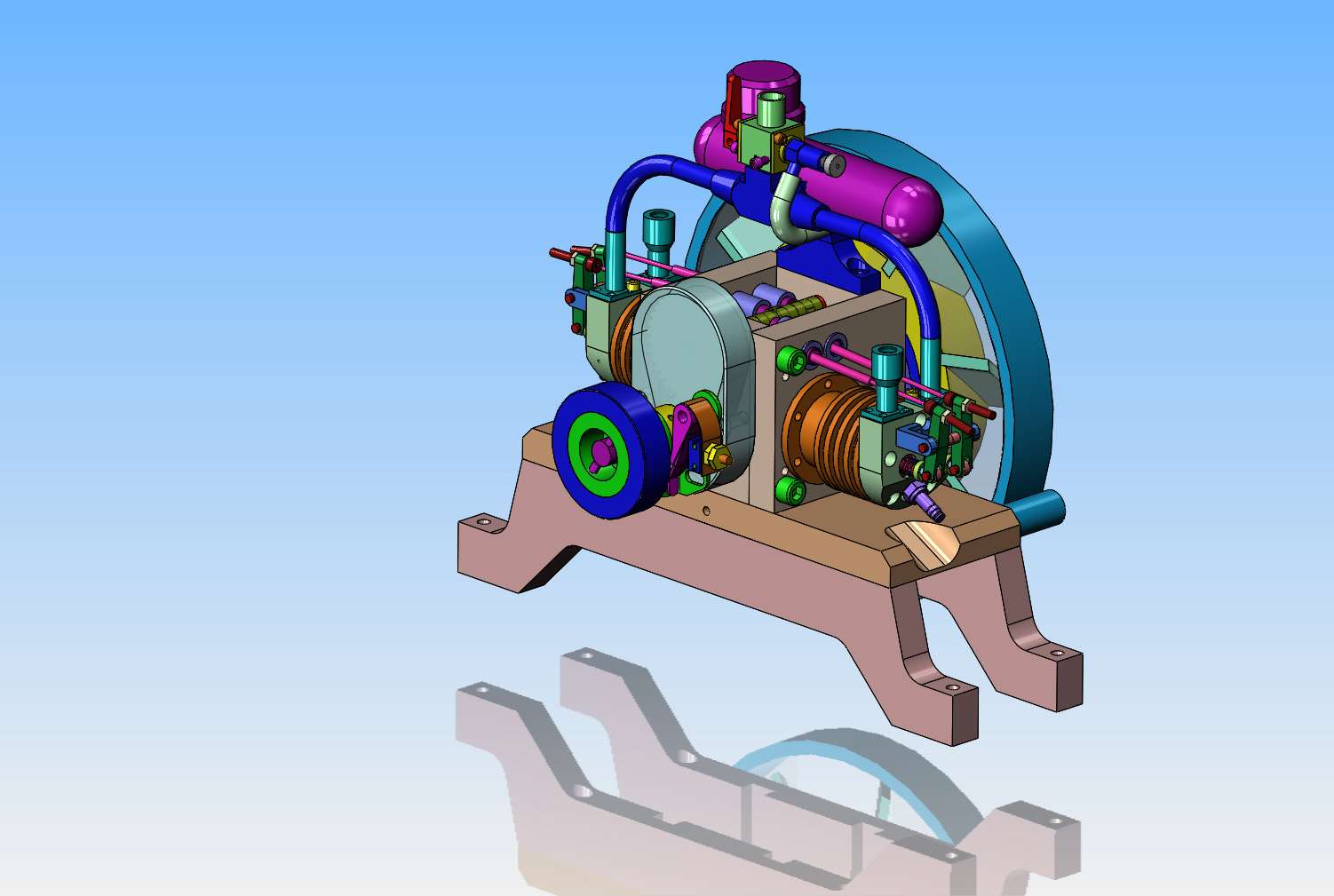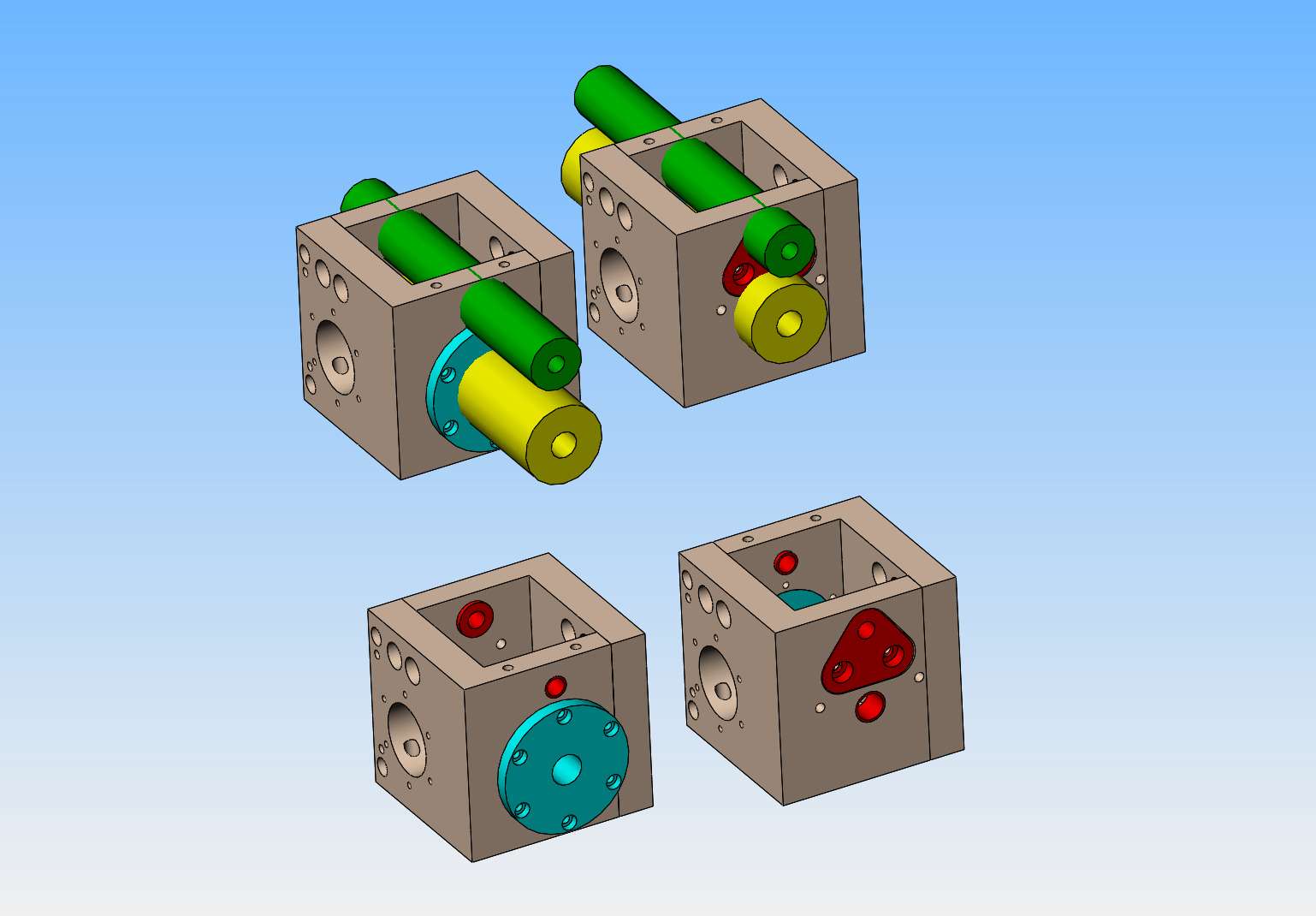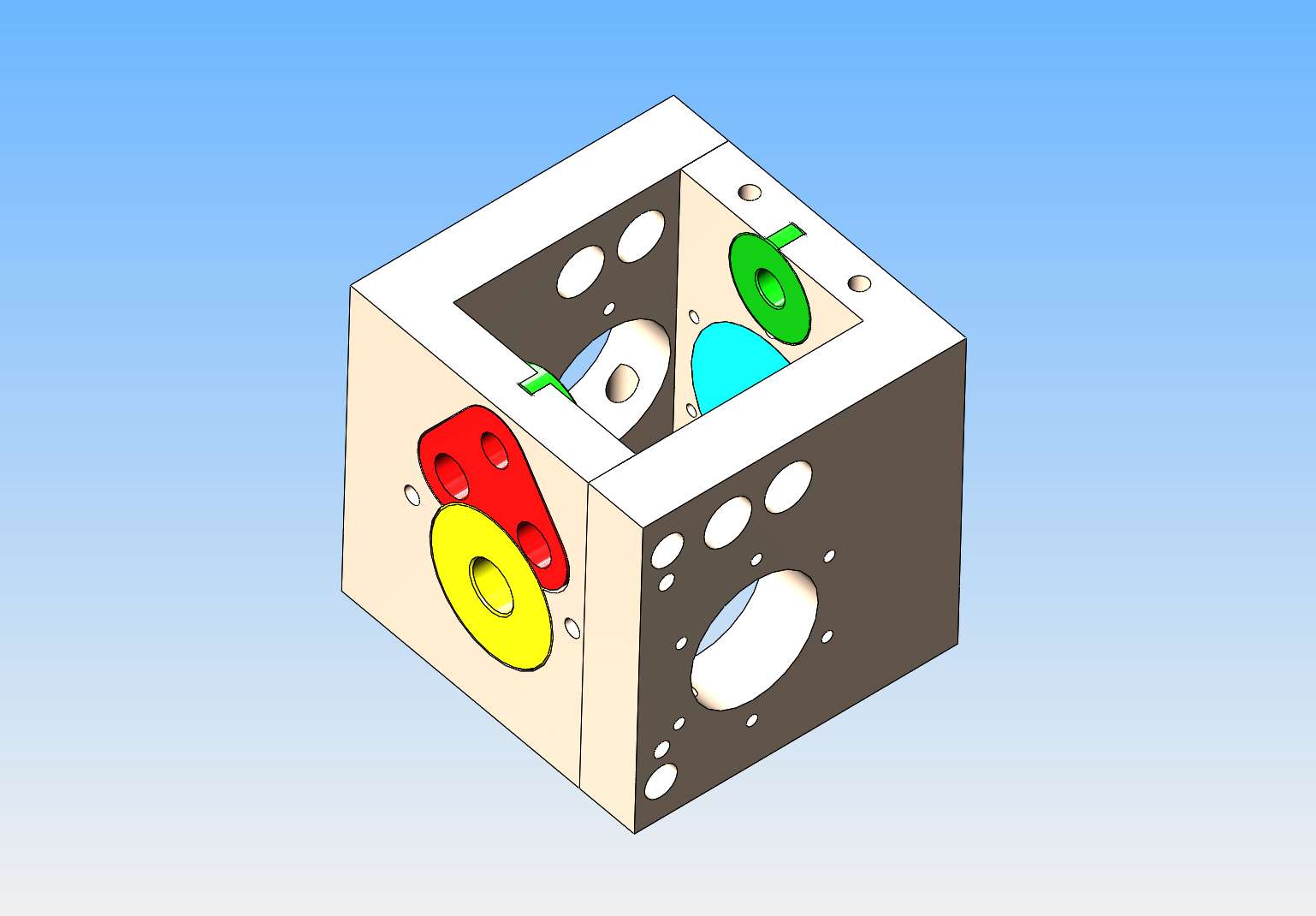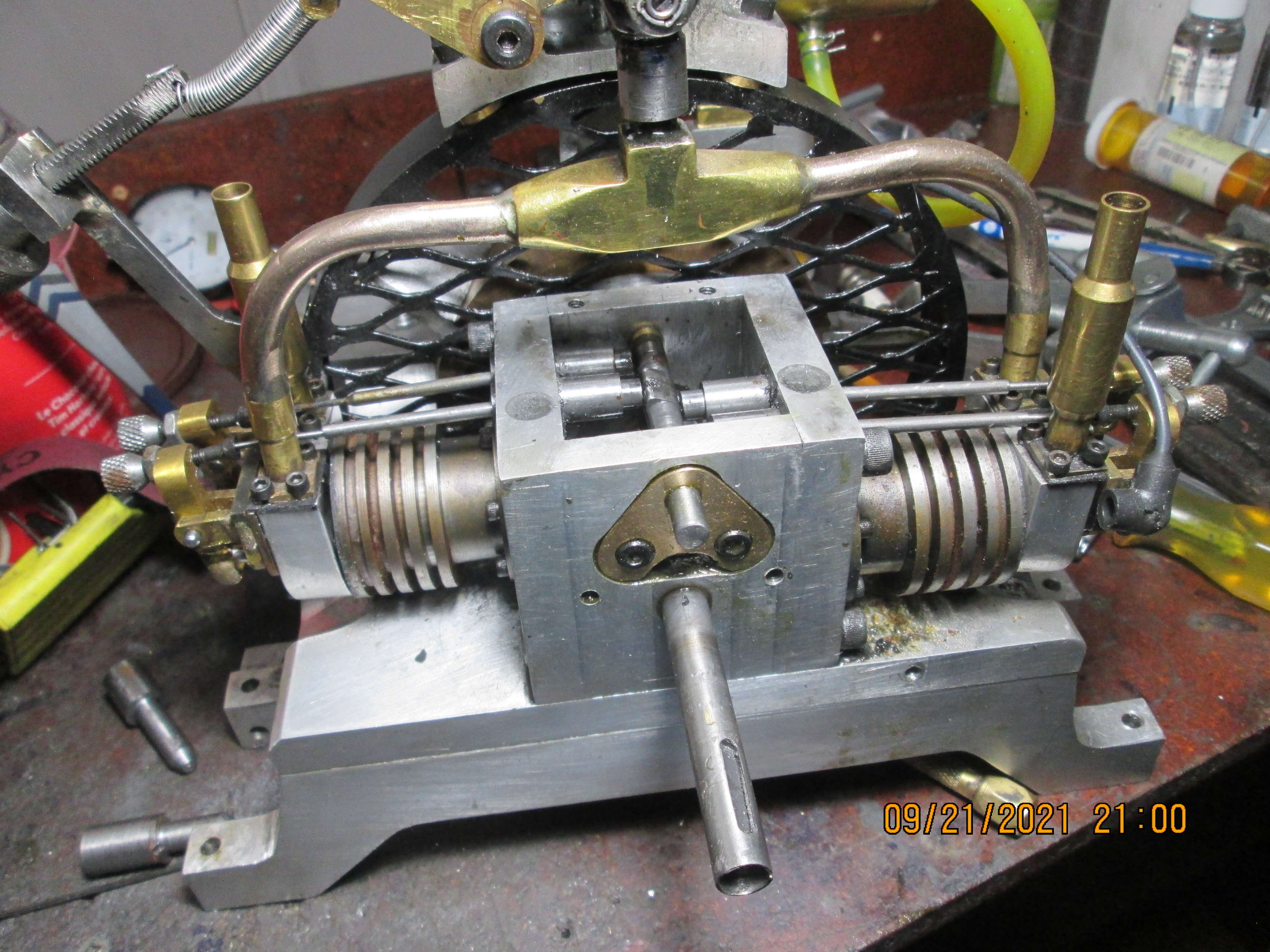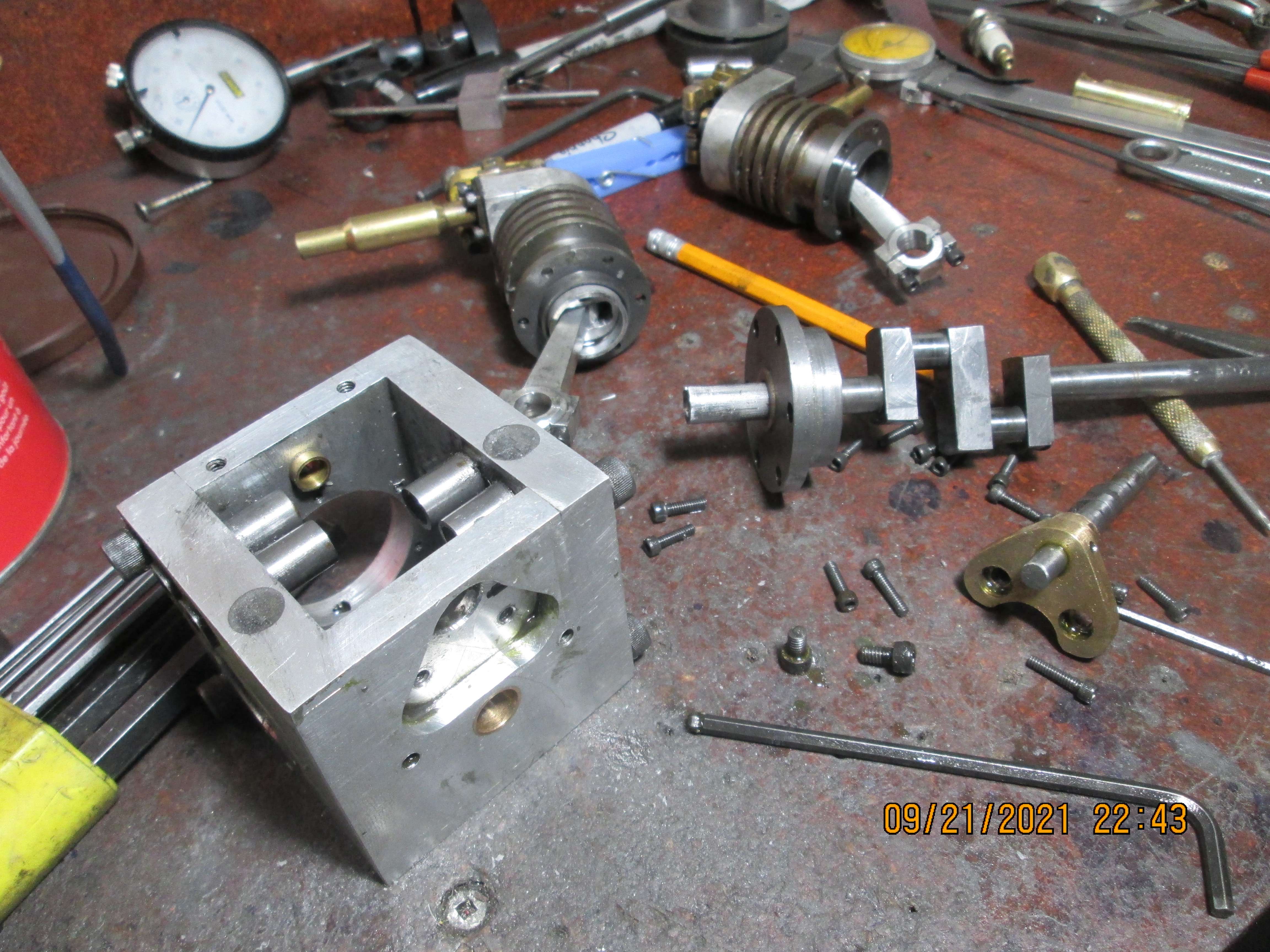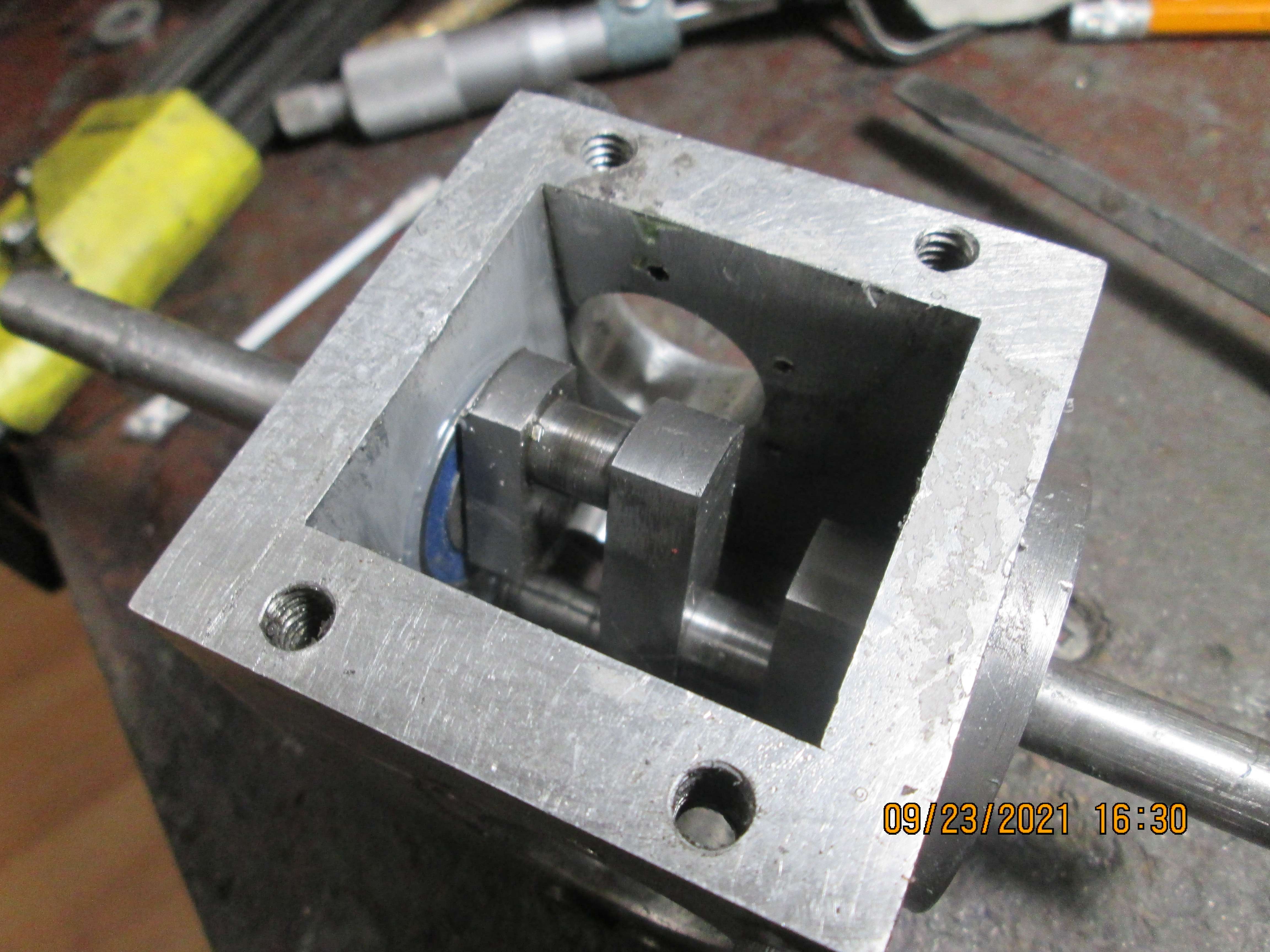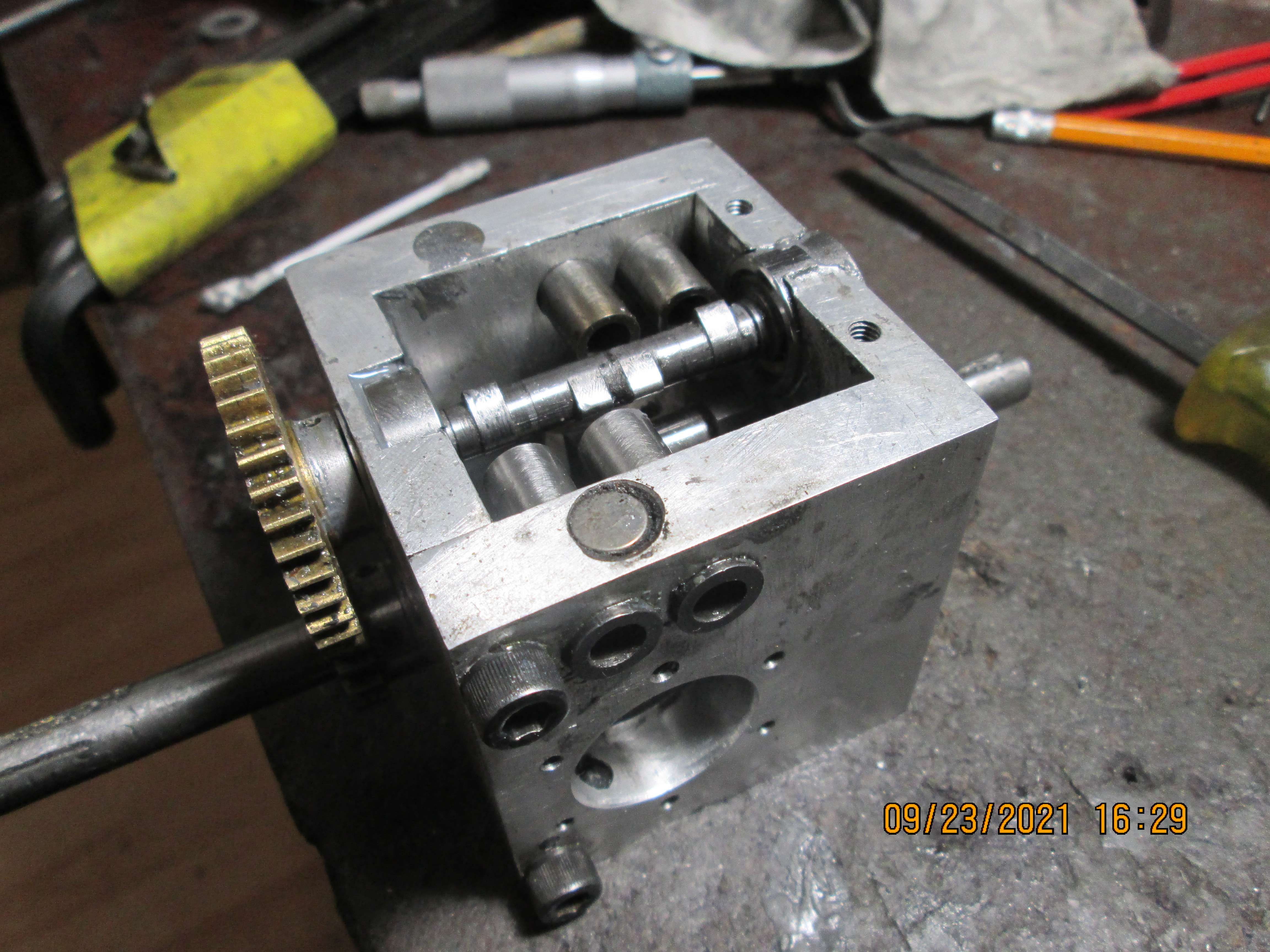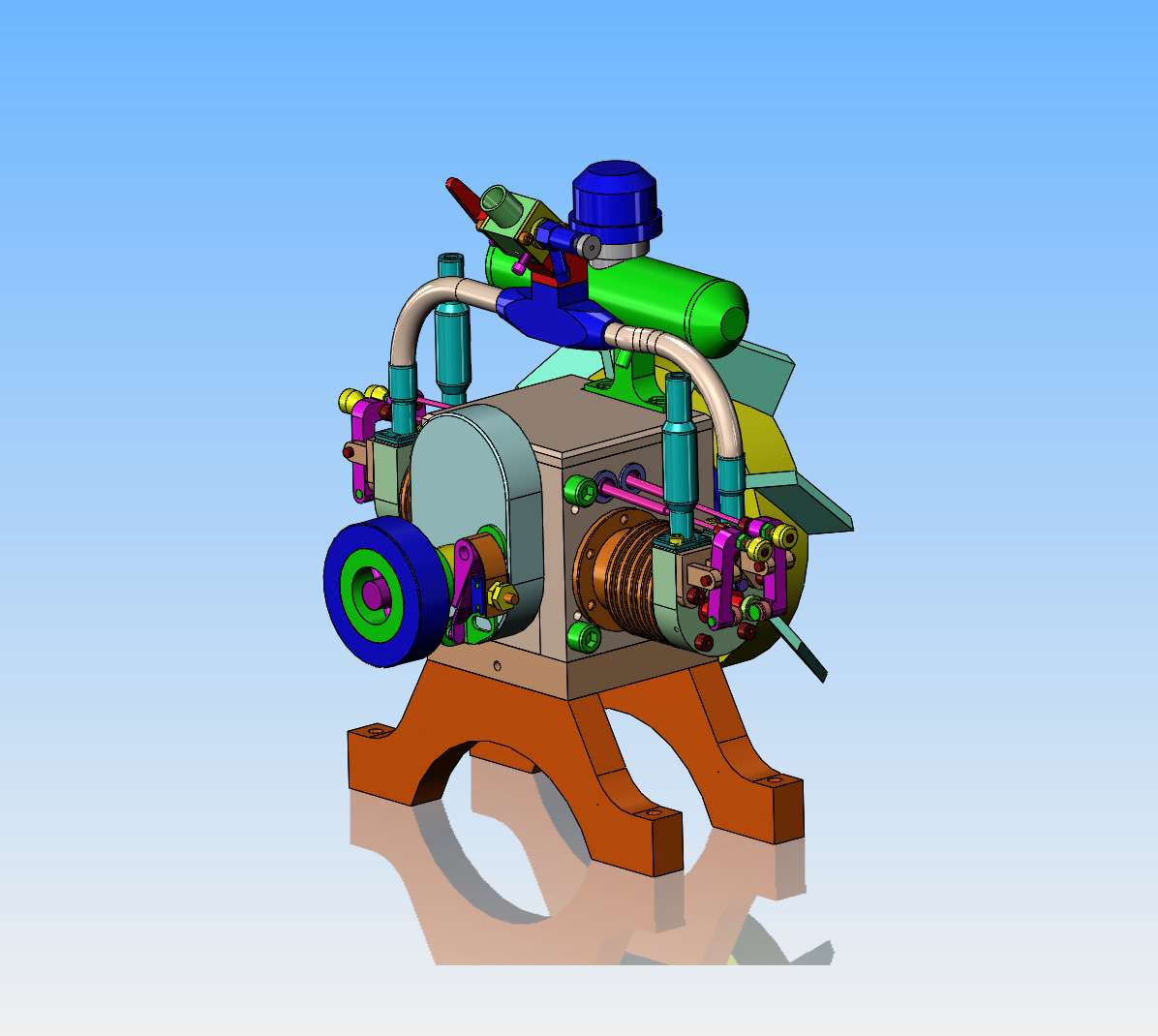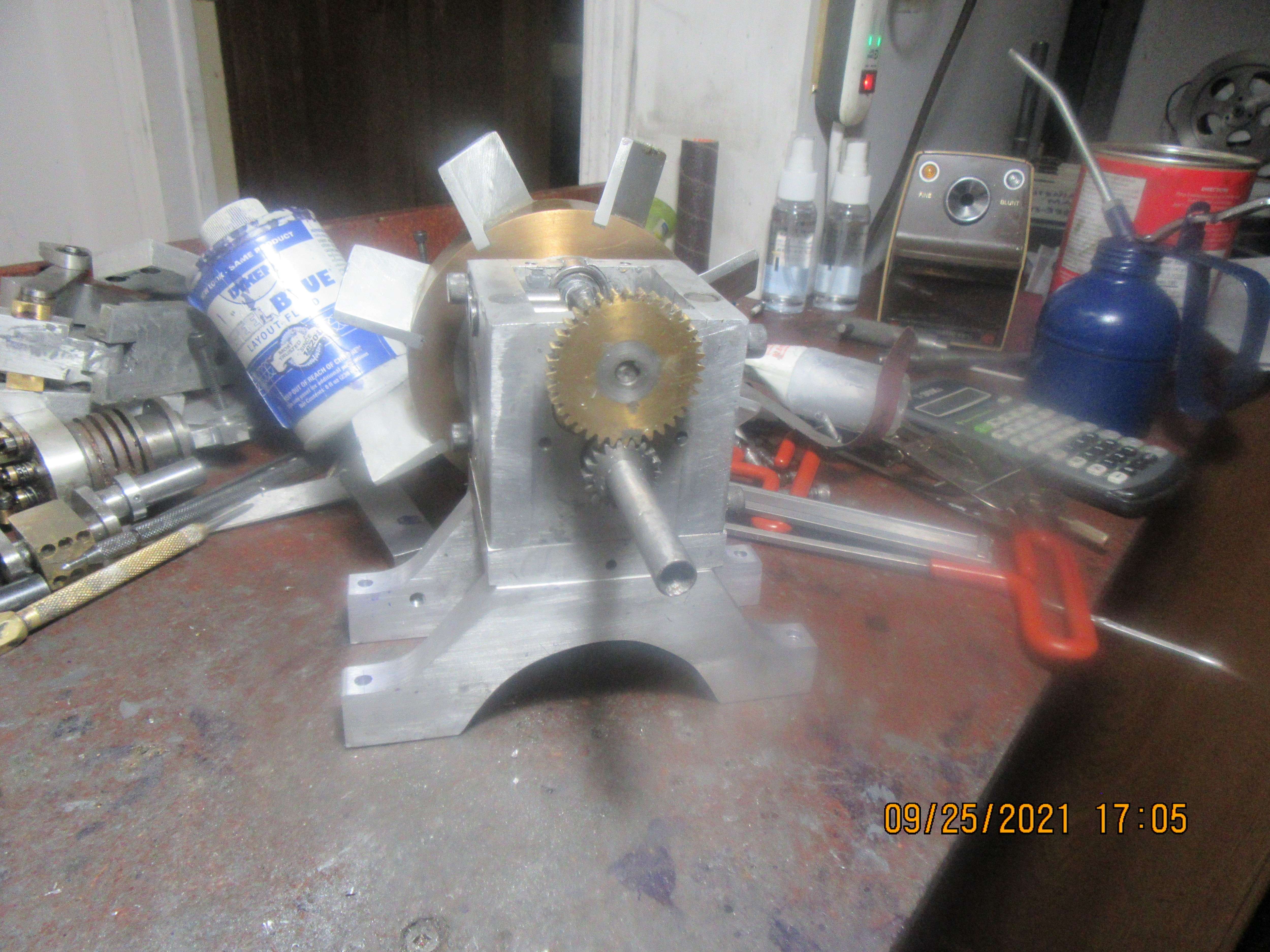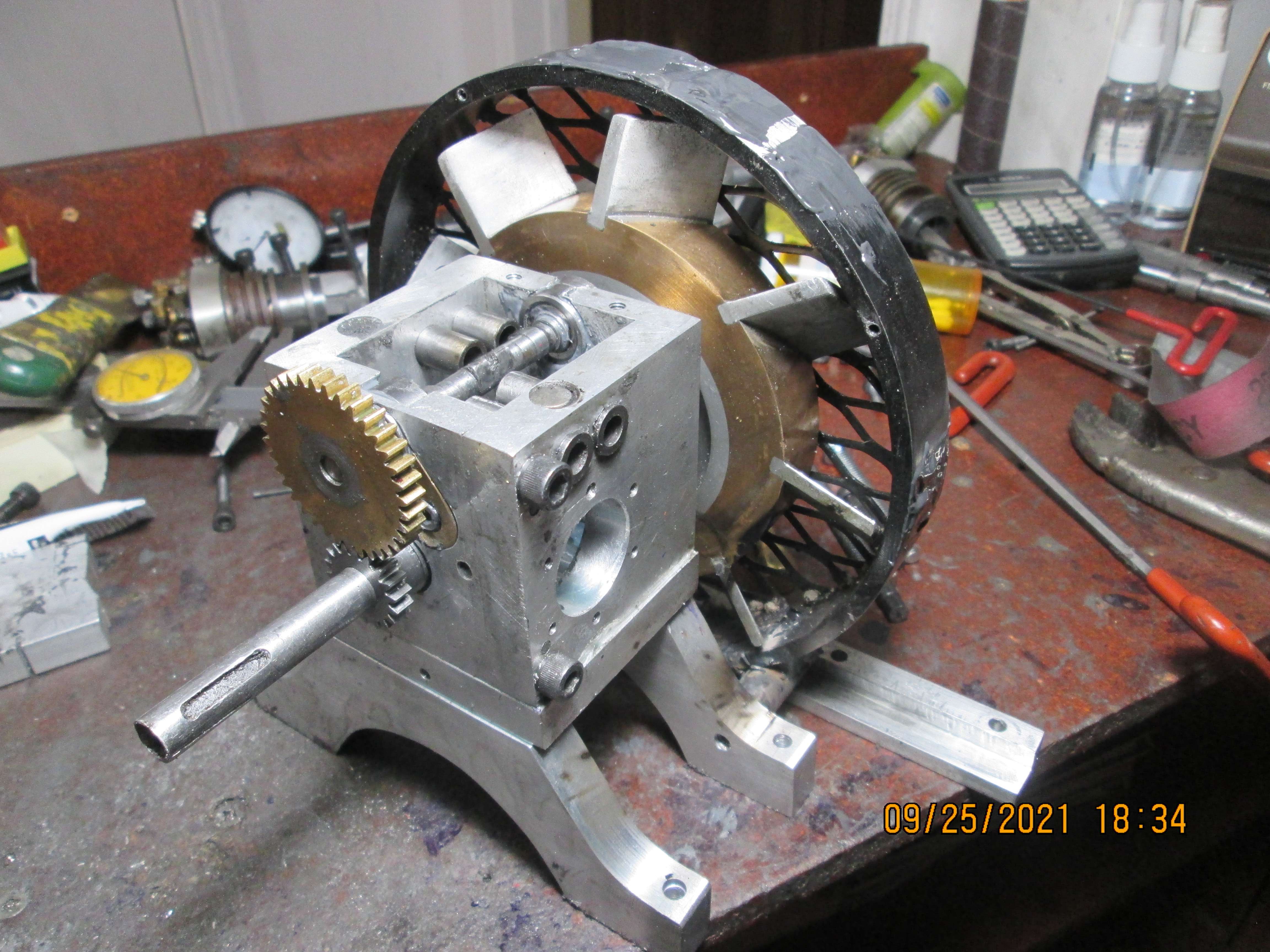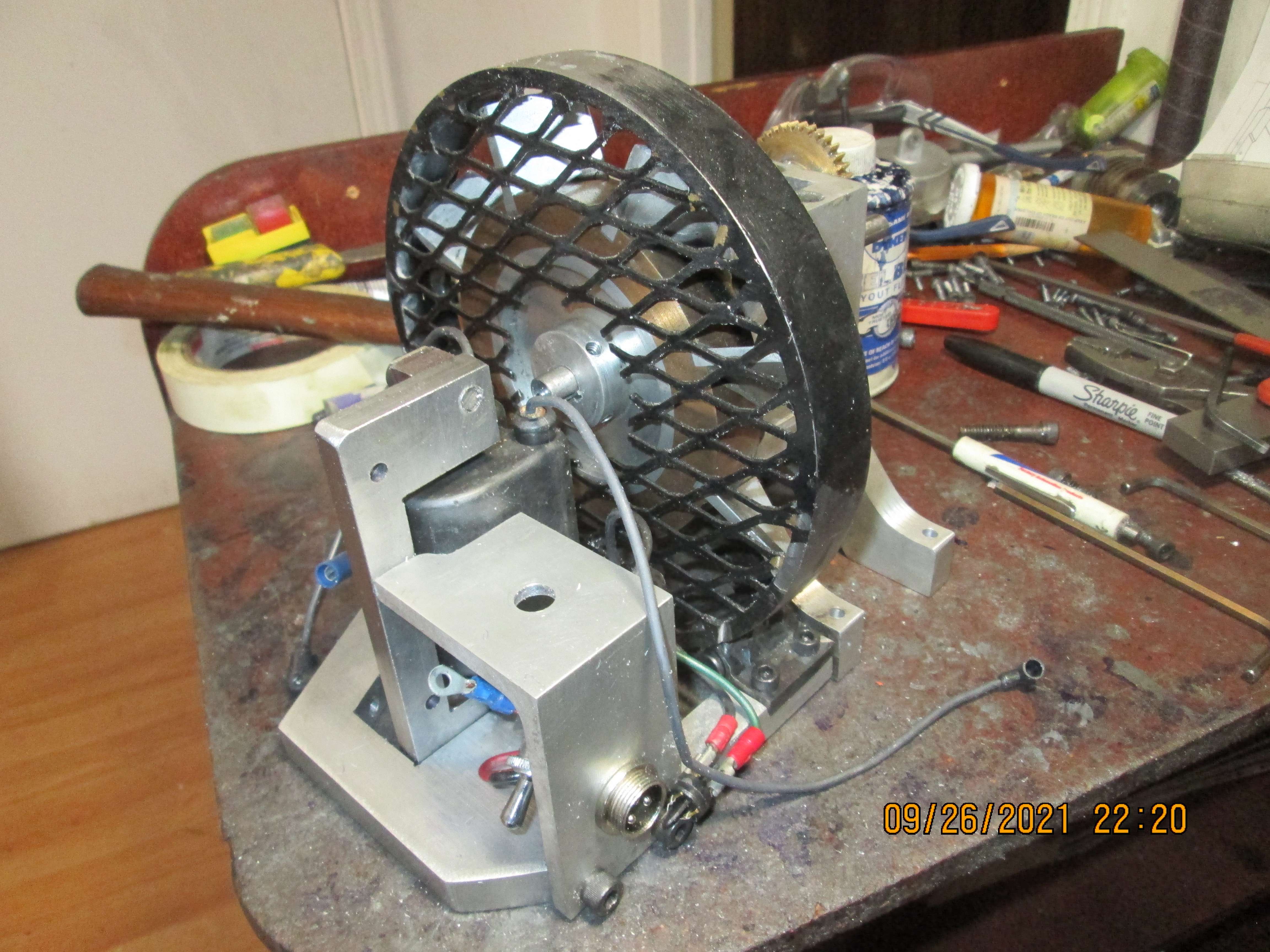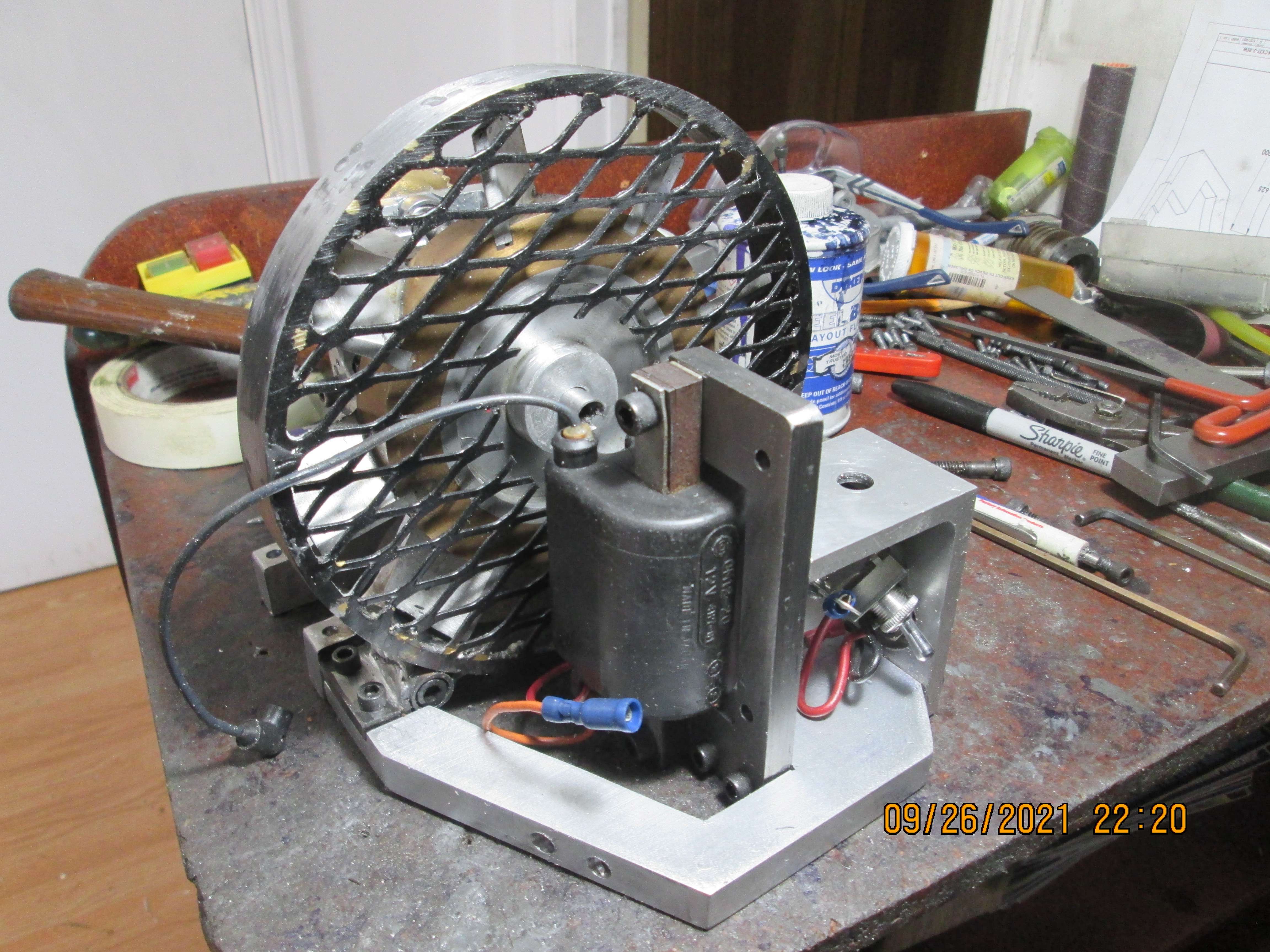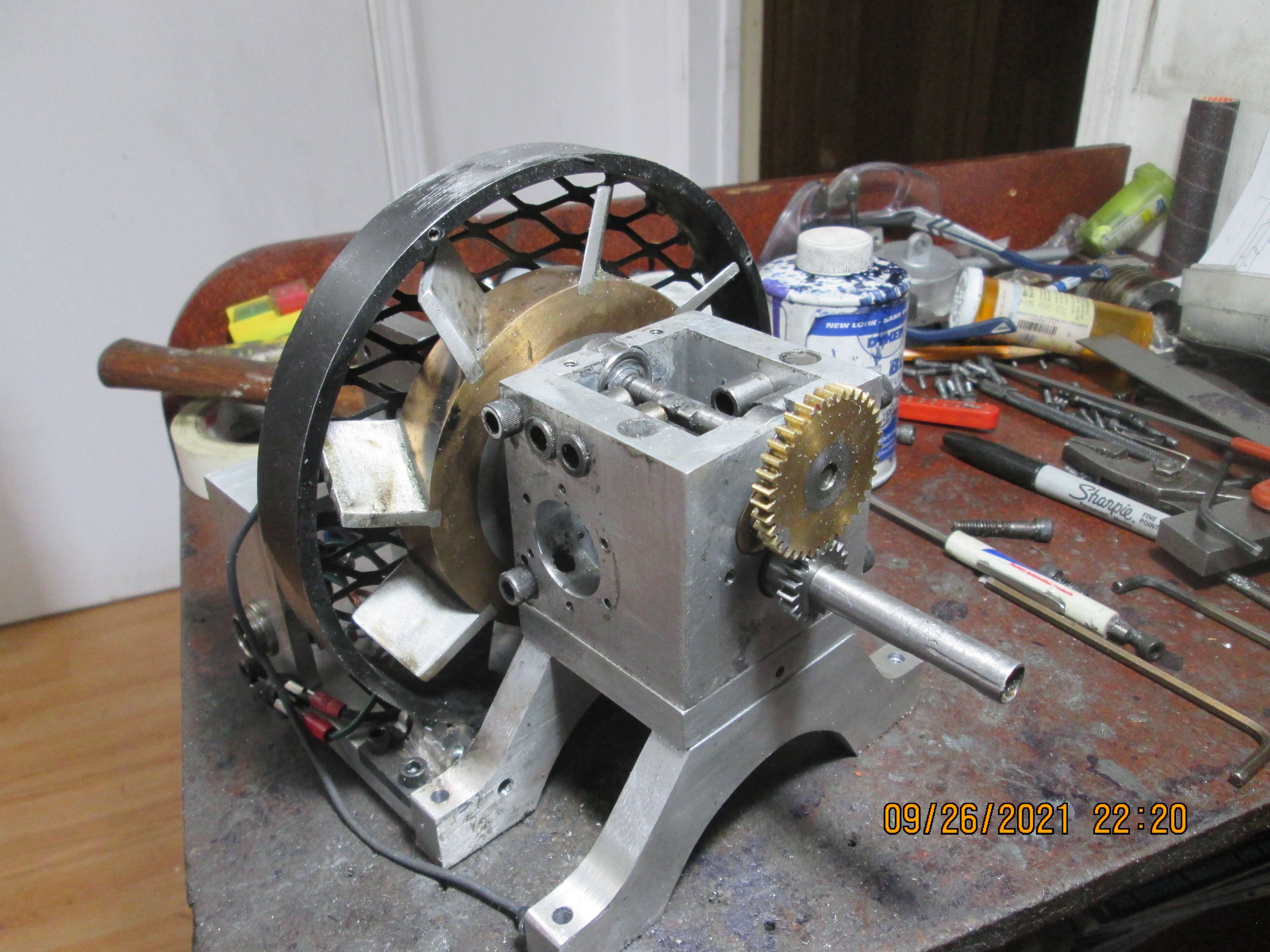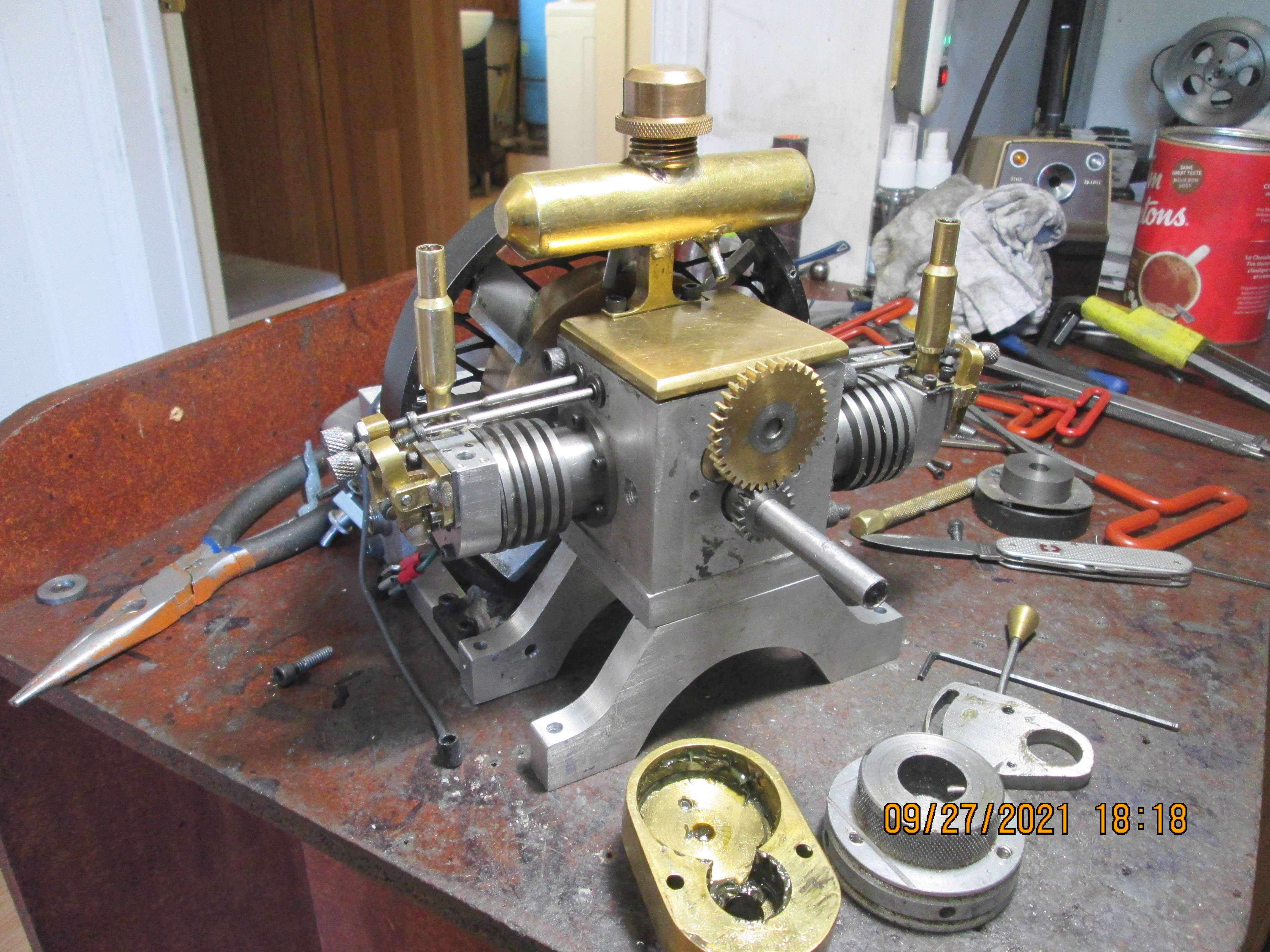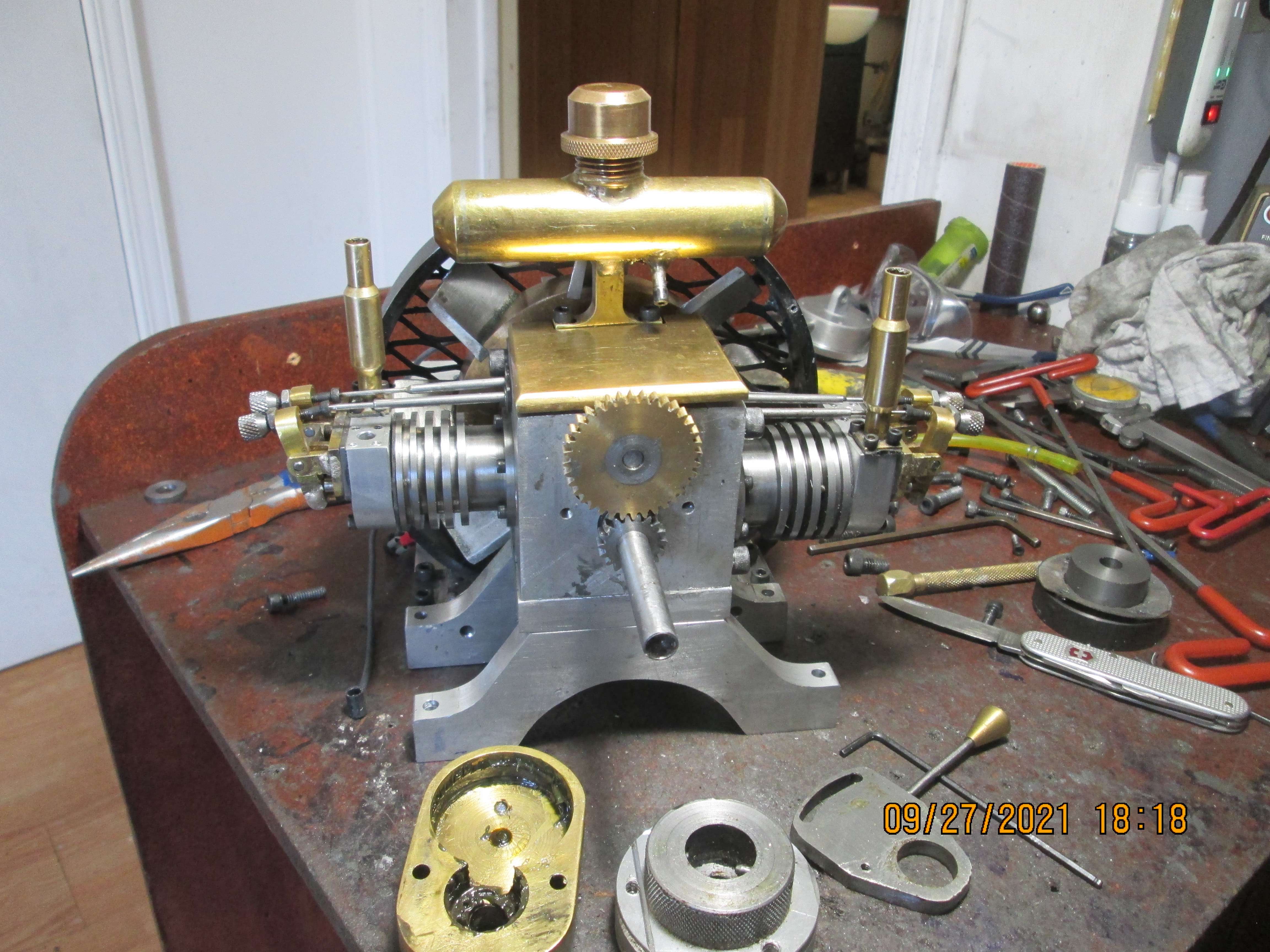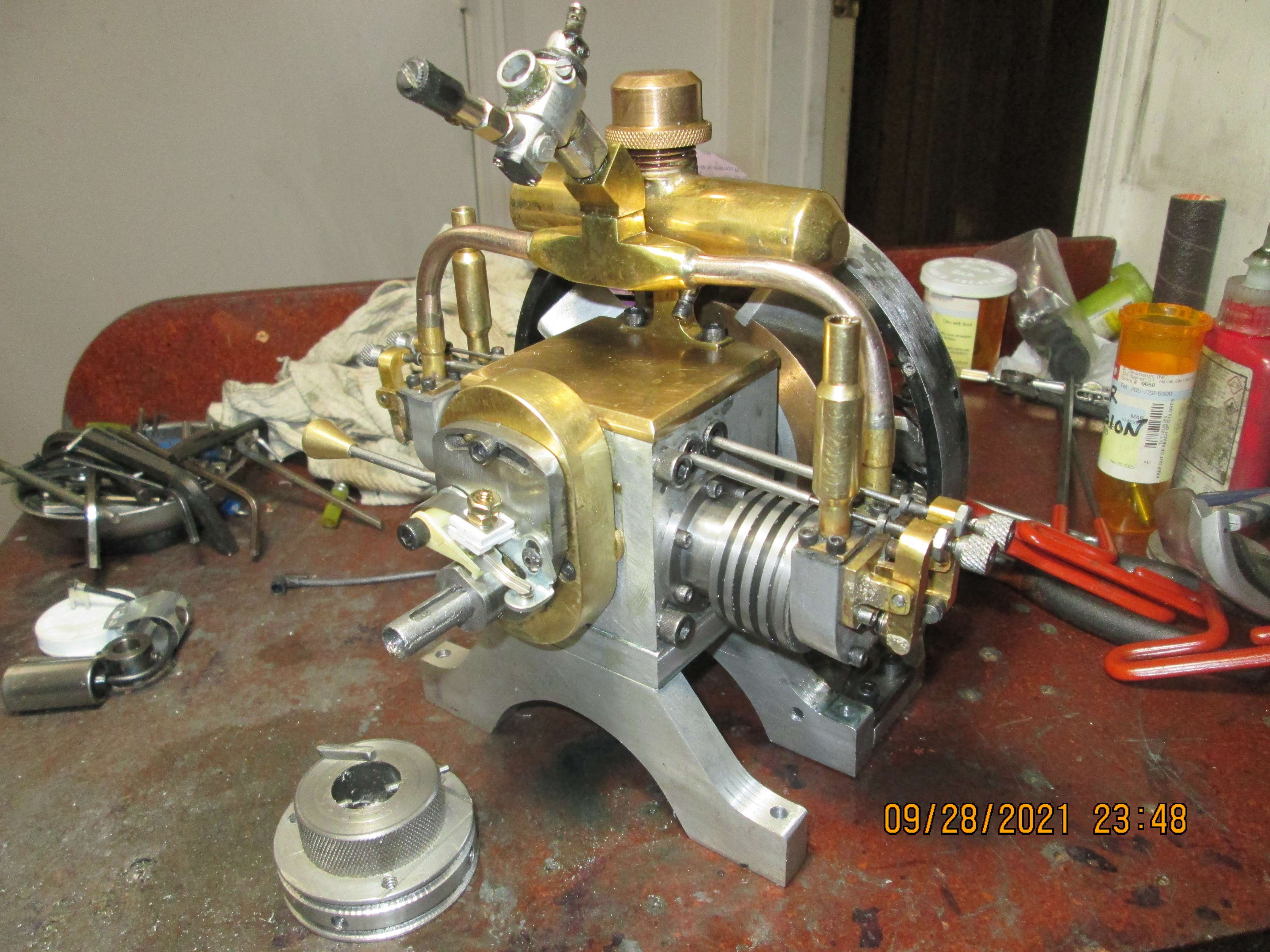A few years ago, I built my version of an opposed twin i.c. engine. It ran very well, and I was very pleased with it. There was always a problem with the configuration of this engine, because the sparkplugs were at the very bottom of the horizontal cylinders, and if you happened to flood it while starting it, you could crank all day and it wouldn't clear itself. However, it did run, and I made some good videos of it running. The crankshaft was riding on bronze bushings, and the crank wasn't "dead nuts" straight. I was using my standard 1975 Chrysler ignition points, and a cam running on the crankshaft. As time went by, with more and more hours running time accumulated on the engine, the bronze crankshaft bushings began to wear, cause by the crank that wasn't truly perfect. It wasn't a wet sump engine, so that didn't really matter a lot ---BUT--as it wore, the ignition cam, attached to the crankshaft began to move around with the sloppy crankshaft. Finally, the ignition cam on the less than perfect crankshaft was moving around enough to seriously affect the timing and spark of this engine. This took me the longest time to figure out what was going on, and when I did figure out what was happening the engine went "Up on the shelf". I promised myself at that time that eventually I would redesign this engine, using ball bearings on the crankshaft, a crankshaft that was truly straight, and a configuration which put the sparkplugs at the top of the horizonal cylinders. I would be able to re-use the cylinders, cylinder heads, overhead valve mechanisms and valves and cams, while making a new central crankcase and fan assembly. This is early days yet, and I still have some unanswered questions about the T head engine I have currently been building, but I think this will be the direction I move in next.
